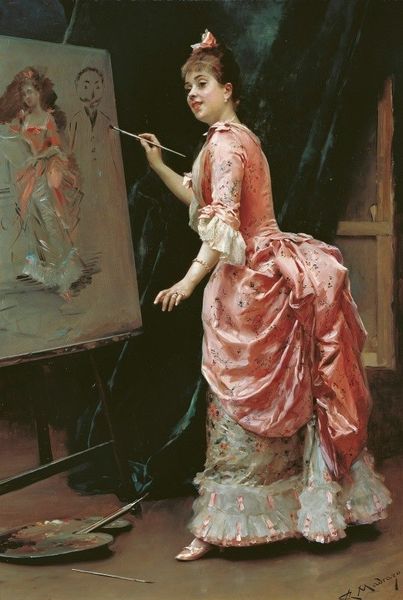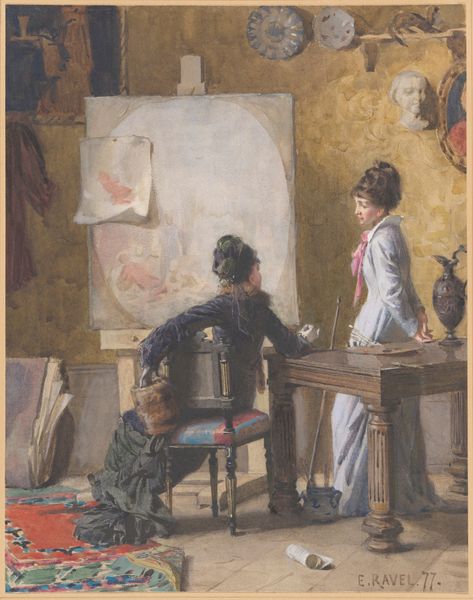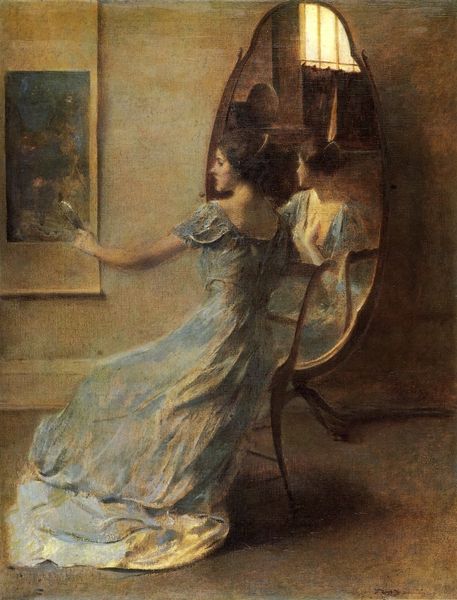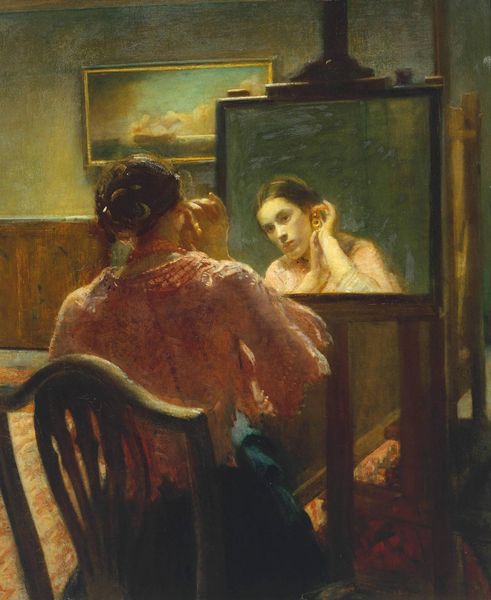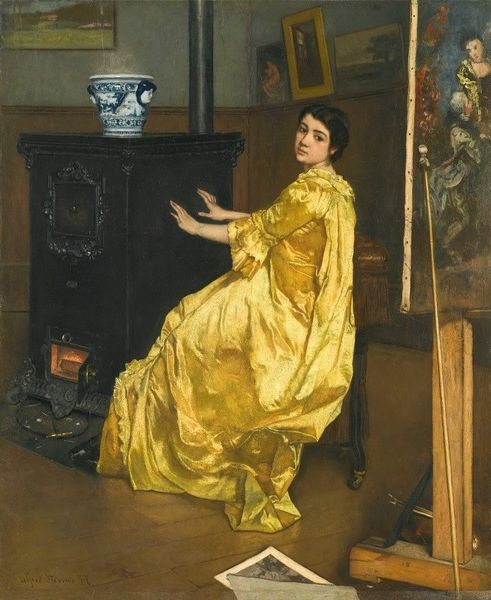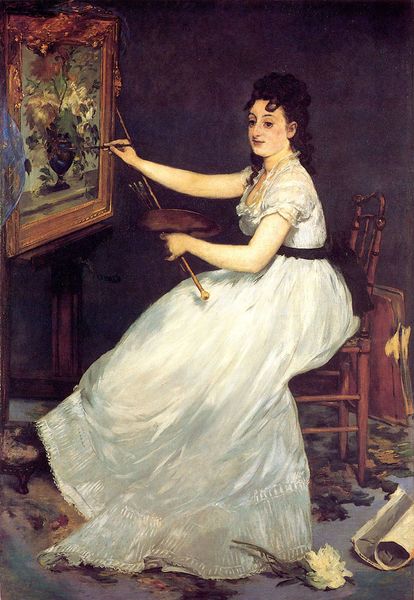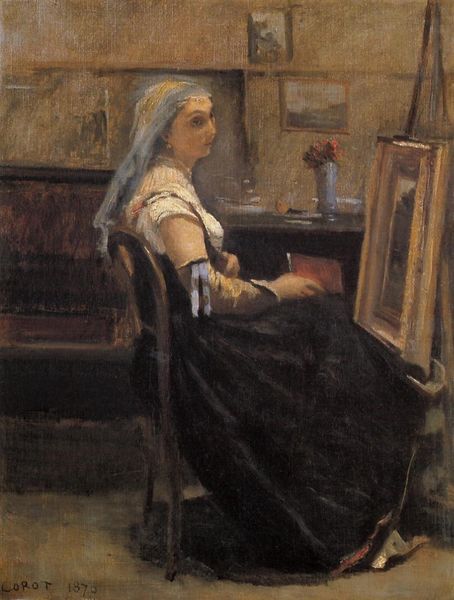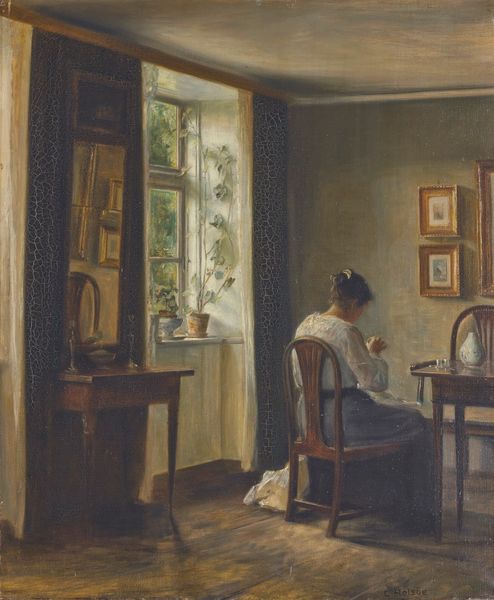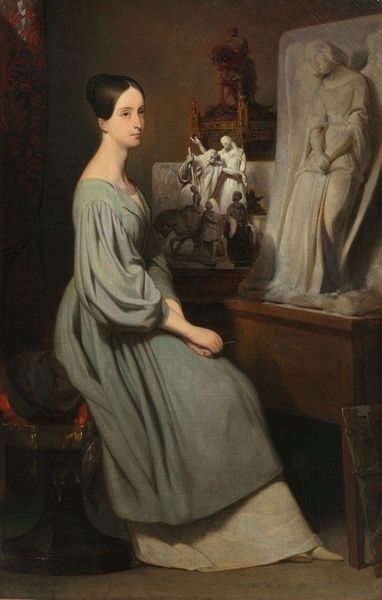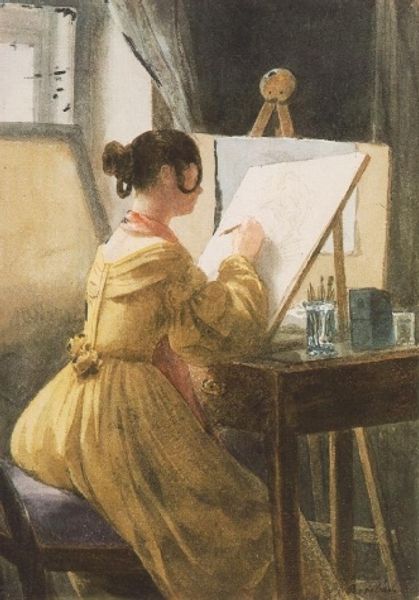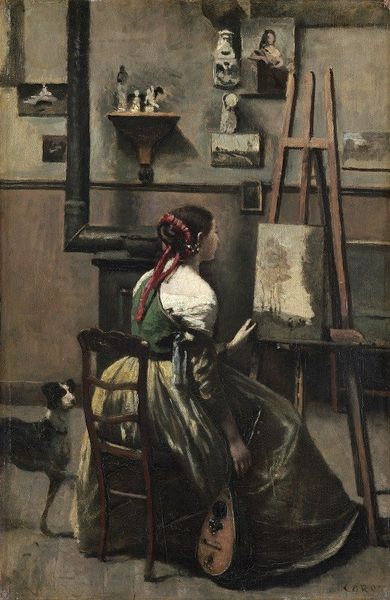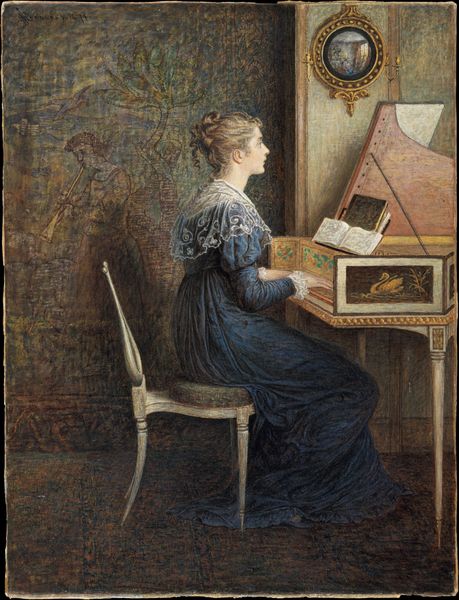
painting, oil-paint, paper, canvas
#
portrait
#
gouache
#
painting
#
impressionism
#
oil-paint
#
paper
#
oil painting
#
canvas
#
underpainting
#
genre-painting
#
academic-art
#
portrait art
#
watercolor
#
realism
Dimensions: 32.5 cm (height) x 24.5 cm (width) (Netto), 43.5 cm (height) x 35.8 cm (width) x 4.7 cm (depth) (Brutto)
Editor: So, here we have "A Lady in the Studio," dating from 1863 to 1867, housed at the SMK. It looks to be an oil painting, and I find the gaze of the figure intriguing, as well as the amount of framed paintings decorating the background walls. What strikes you about it? Curator: For me, the beauty lies in deciphering the means of its creation. This is oil paint on canvas, but think about the production that went into it! Where did Jacobsen source his pigments? Were they readily available, or did he rely on international trade networks? Editor: That's not something I had considered. I was focusing more on the figure depicted and her artistic environment. Curator: But her artistic environment IS the key. Look at the materials displayed. The canvas itself – a woven fabric stretched over a wooden frame – speaks to the integration of craft and "high" art. Think about the labor involved in producing those materials, from the flax fields to the carpenters shaping the wood. Editor: It seems like you're pointing to the normally invisible processes of creating art. Is that correct? Curator: Exactly! This image is not only of the final, aesthetic creation but the materials and means necessary for its production, which highlights social stratification, commercial exchange, and technical advancements of Jacobsen's time. It blurs the lines between artist and the many labourers involved. Editor: That definitely changes how I view it. I initially saw it as just a portrait, but now it feels like it’s documenting a whole system of art-making. Curator: Indeed. By investigating its materiality, we begin to unveil a narrative about not just the artwork, but of 19th-century labor. Editor: I'll certainly remember to look beyond the surface next time, recognizing art making for the multi-layered activity it truly is!
Comments
No comments
Be the first to comment and join the conversation on the ultimate creative platform.
